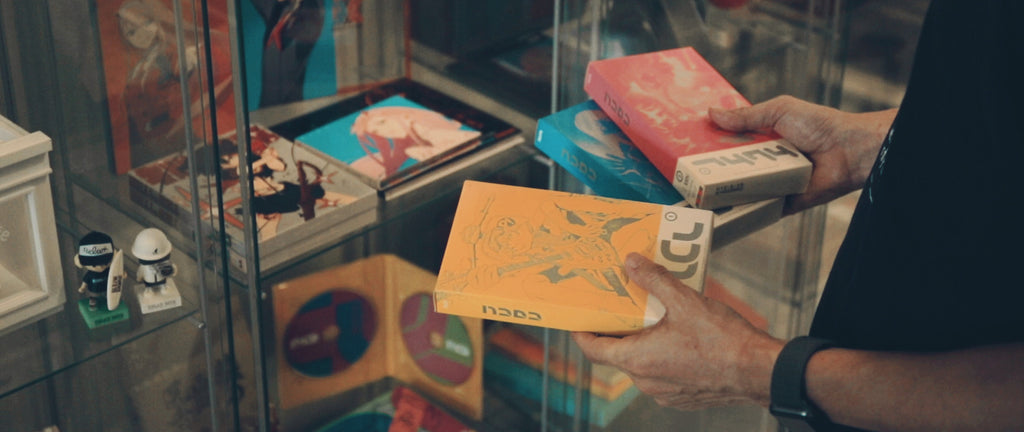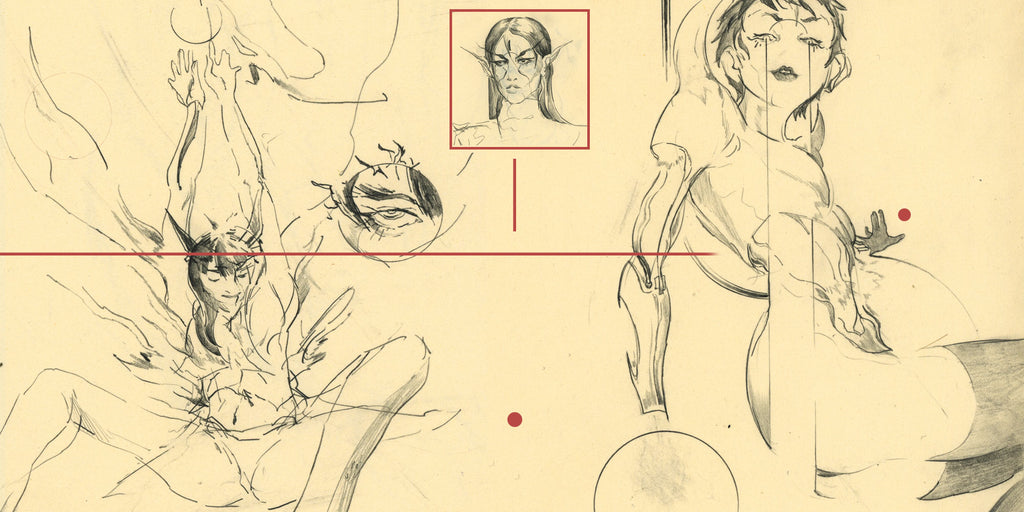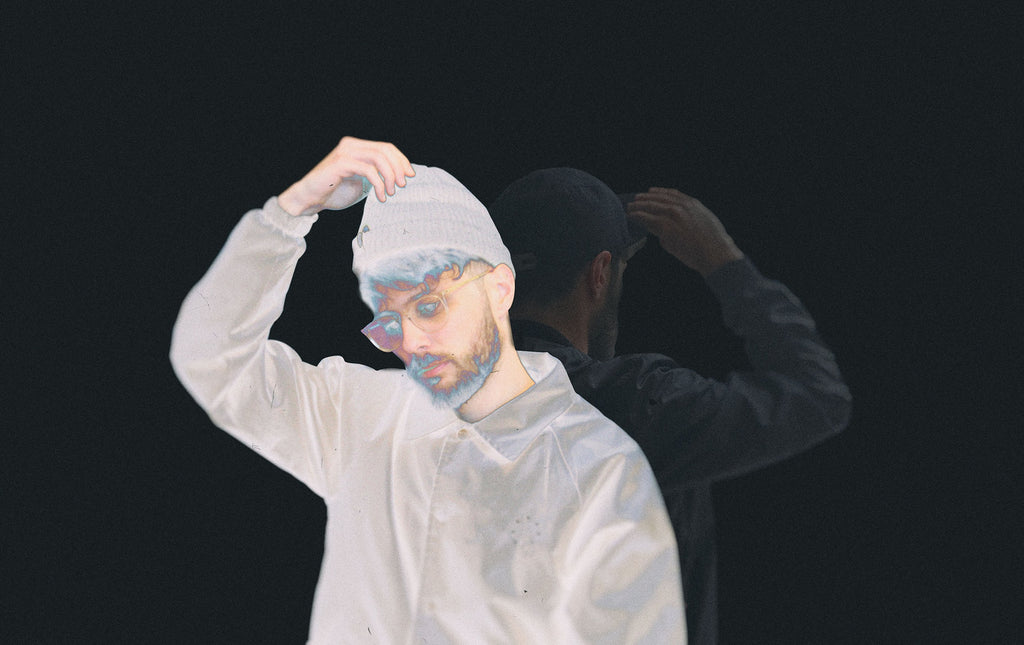Are you familiar with any of the 4 masterpieces we are currently featuring?
Masashi: I feel all of them are well known masterpieces but personally ‘FLCL’ and ‘Royal Space Force: The Wings of Honnêamise’ are the most memorable.
If so, could you share any personal episodes related to that masterpiece?
Masashi : Back when I was in elementary school, ‘Royal Space Force: The Wings of Honnêamise’ was the first anime I decided to go out of town to watch. Actually my grandmother took me all the way to Ikebukuro though. To be honest I had no idea what the anime was about but Anno-san’s (Hideaki Anno) rocket scene was mind blowing as a child and is something I still strongly remember.
Inokashira is my hometown which has been an area known for manga and anime. I grew up when Studio Ghibli was still in Kichijoji, Mangano-mori was right at the station and if you went to PARCO you would have the art store Izumiya and so I was raised in that kind of environment where anime and manga was my natural surroundings.
I designed the packaging and logo for ‘FLCL’ which was my first anime work. I was personally familiar with anime and love anime, but did not really have any prior professional anime experience. So the opportunity to design ‘FLCL’ was really something that just fell in to my lap at that time.

The director, Tsurumaki-san (Kazuya Tsurmaki) is very specific about design and was always a person who really put value to the packaging even back when I received the offer.
He said, “Creative contents like anime will someday go digital so there will not be any more needs for packaging. So if we are going to sell it as a packaged item, the package itself needs to have a value of its own”. It's just like when you don't listen to vinyl records anymore but the packaging has too much value so you feel that you don’t want to throw it away. So he asked me to create something with style. Back then was the era when MP3’s just started to become a thing so he probably felt that strong emotion about package designs.
He also specifically asked me to not make it a typical anime design. So I put a lot of thought into how to not make it “anime-like” and decided not to use any colored drawings and use a lot of line drawing for the cover and for the back design I decided to add storyboard drawings instead of typical images from the anime, which overall I kind of broke all the conventional rules from that time and did whatever I felt like. Another request was that he wanted to make the packaging something that felt like a box of sweets. And the reason why I changed the logo for each package design was just out of pure spontaneous creativity and my designer mates and I were really in to designing lots of logos, so for ‘FLCL’ I suggested to do the same which actually made it to the final packaging .

What kind of an impact did it have on you?
Masashi : At that time with ‘FLCL’ , I was just starting out as a designer and didn't know where I was heading, but I think with this opportunity it helped me clearly understand my own characteristics as a graphic designer. After ‘FLCL’, I didn't have the opportunity to do any anime related work for quite some time though.
But later on my work lead to opportunities to do package design for ‘Rebuild of Evangelion’ series and the title logo and telop design for ‘Kill la Kill’ etc. Recently I have worked on the logo design for ‘Darling in the Franxx’.
I had a lot of creative freedom when designing the logo for ‘FLCL’ and for ‘Kill la Kill’ it was a competetion so I had only proposed one basic design which made it to the final product so it was fairly a smooth process, but for ‘Darling in the Franxx’ everything was from scratch so especcially the main logo was a difficult process. I propesd a lot of ideas and was working on the designs for 2-3 months. But overall, since it was my first time really taking time to thoroughly discuss the design with the director and their creative team so personally it was all a very good experience.

What is fun working in the anime industry is the fact that all the clients are super good at drawing. So during meetings, we would usually have paper and pencils laid out on the middle of the table and start creating as a collaborative process.
For general clients, I usually create my rough designs with Adobe Illustrator so it looks somewhat close to the final version, so whenever I propose it in Illustrator data, most clients think it is my final design. So I have to say “no, this is just the rough design” but they seem to get what I really mean.
However for anime clients, I noticed that it's okay if it really is a rough hand drawn sketch. People who are good at drawing are also good at completing the image in their mind, so even a simple hand drawn sketch does the job.
So for ‘Darling in the Franxx’ the rough sketch for the package design was all hand drawn. These kind of experiences I had became really helpful for the current anime designs I am working on. But sometimes my clients minds go way beyond my initial intention and have this high level image in their minds, so sometimes that is challenge for me.

Could you tell us your favorite masterpiece?
Masashi: Creativity-wise, Katsuhiro Otomo’s ‘AKIRA’ had a huge impact on me. Back when I was in elementary school, when I went to my local bookstore, I saw the cover design for ‘AKIRA’ volume 4 and immediately found myself interested in graphic design. I was like, “what is this?! This is soo cool!” . So ‘AKIRA’ defineitly created that initial step to pursue my career as a designer.
Fujio F. Fujiko’s ‘Manga Michi’ is definitely another one. This manga is Fujio’s personal story becoming a manga artist and is a business guide for freelancers. How to make something creative and fun, how to make other people accept your work and all. The whole process is in the manga. I loved this manga since I was young and personally is my first and best business guide.
Looking back at it now, I think it really is the reason why I am working as a freelance graphic designer.

What’s your definition of a “Masterpiece”?
Masashi : As my understanding, I think it is your creativity put into some kind of form. It is something has the power to influence something greatly.
What is your opinion of how the younger generation are consuming media contents today ?
Masashi : I don't think there is this thing where you could say “young people are like this so they consume media like this” . I think it is more about the evolution of media and communication methods, so the way people are consuming doesn't really differ between particular generations. How people consume contents are really about the individual person and really not about the what kind of era we are in. I think we should look at it as people who just watch, people who research and critique, people who gain inspiration and create something etc. and categorize it by the action people take when consuming these kind of contents and then, I think there could be something that we might learn about.





